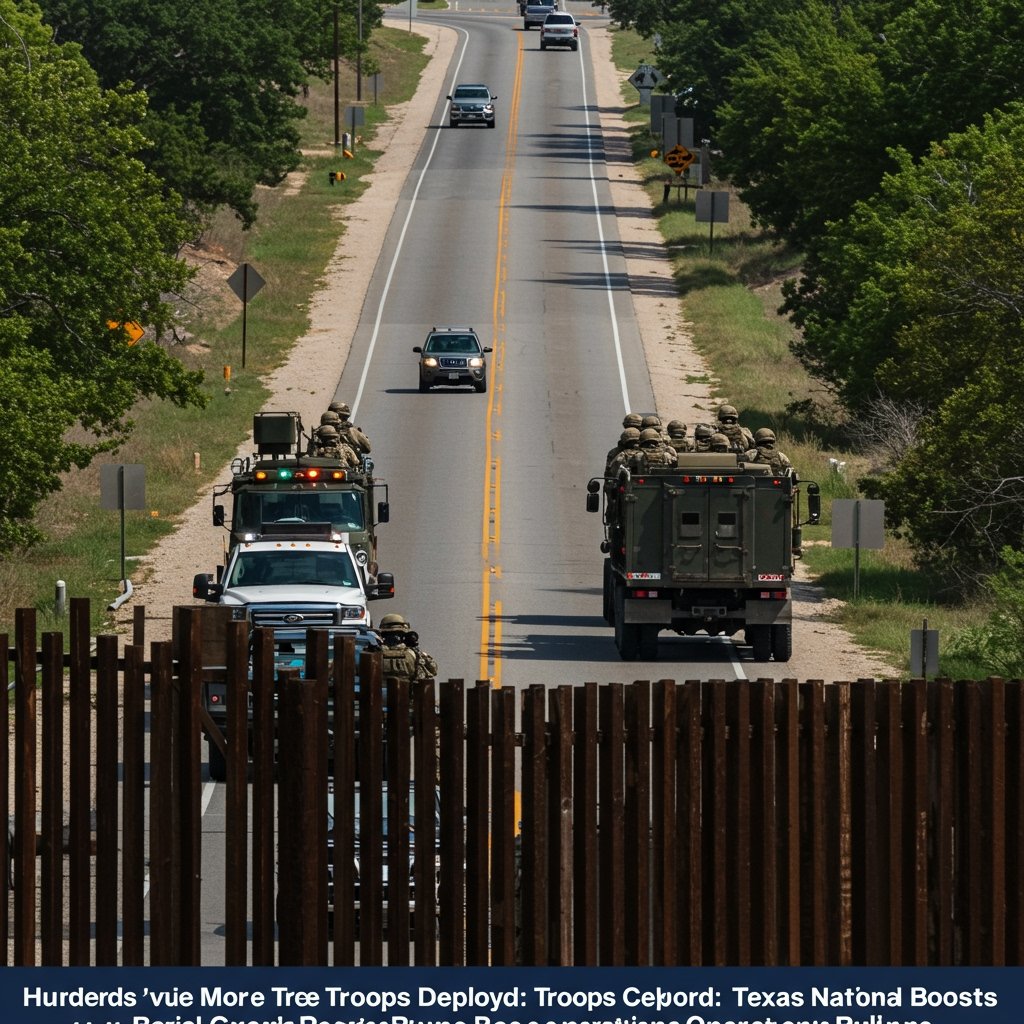Texas Ramps Up Border Barrier Operations Near Eagle Pass in Mid-March 2025
AUSTIN, TX – In a significant escalation of its state-led border security efforts, the Texas National Guard has substantially increased both its troop deployment and the pace of barrier construction along the state’s southern border. This intensified operational posture became particularly pronounced near the city of Eagle Pass during the period of mid-March 2025.
The expansion involves the deployment of hundreds of additional personnel to supplement existing forces. These troops are actively engaged in accelerated installation efforts, primarily focusing on deploying extensive runs of concertina wire and other forms of physical barriers. The state cites ongoing migrant flows as the primary driver behind this urgent expansion.
Governor Greg Abbott has been a central figure in advocating for and directing these state-level actions. He has repeatedly articulated the necessity for Texas to take unilateral steps to secure its border, framing the effort as a direct response to what the state perceives as inadequate federal enforcement and persistent challenges at the border. Governor Abbott has consistently referenced the state’s constitutional authority, asserting a right to defend itself from invasion, to justify these robust measures.
Operational Focus and Scale
The area around Eagle Pass, a key crossing point, has become a focal point for the Texas National Guard’s expanded operations. Aerial and ground observations during mid-March 2025 showed a marked increase in military personnel and equipment dedicated to barrier construction. The hundreds of additional personnel are deployed across various functions, including direct construction work, logistical support, surveillance, and patrolling areas adjacent to the newly installed barriers.
The accelerated installation of concertina wire is a visually prominent aspect of this expansion. Rolls of the sharp wire are being unspooled and secured along stretches of the Rio Grande riverbank and adjacent state-controlled lands. While concertina wire forms the bulk of the new barriers, the effort also includes the placement of other, unspecified physical deterrents aimed at impeding illegal crossings.
State officials have emphasized that the pace of construction has been significantly increased compared to previous periods. This acceleration is directly linked to the surge in personnel, allowing for more teams to work concurrently across longer sections of the border near Eagle Pass.
Legal Context and State Justification
This significant maneuver by the Texas National Guard occurs amid continued and complex legal debates concerning the division of responsibilities between the state and federal governments regarding immigration enforcement and border security. The state’s actions follow recent judicial considerations that have highlighted the ongoing tension and legal challenges surrounding Texas’s assertive border policies.
Governor Abbott’s administration has consistently argued that the state is compelled to act due to the federal government’s alleged failure to uphold its constitutional duty to protect states from invasion and manage the border effectively. The invocation of the state’s constitutional authority is a core tenitive of Texas’s legal defense of its border operations, including the erection of barriers and the deployment of state military forces.
The persistent challenges cited by the governor encompass not only the volume of migrant arrivals but also the strain on state resources and the perceived lack of control over the border region. From the state’s perspective, the expanded barrier operations near Eagle Pass in mid-March 2025 are a necessary, albeit extraordinary, measure to regain operational control and deter illegal entry.
Perspectives and Future Implications
The intensified operations have drawn varied reactions. Supporters of the state’s actions praise the proactive approach to border security and view the barriers as essential tools for deterrence. Critics, however, raise concerns about humanitarian impacts, environmental effects, and the potential for the state’s actions to conflict with federal immigration law and policy.
The presence of hundreds of additional Texas National Guard troops and the proliferation of concertina wire near Eagle Pass serve as a tangible representation of the state’s commitment to its independent border security strategy during mid-March 2025. The expansion signals Texas’s resolve to continue its barrier projects despite ongoing legal battles and federal opposition.
The situation near Eagle Pass remains dynamic, characterized by the visible state military presence and the continuous construction of barriers. The long-term implications of this accelerated state effort, both in terms of border security effectiveness and the resolution of the state-federal legal standoff, are subjects of ongoing observation and debate.






